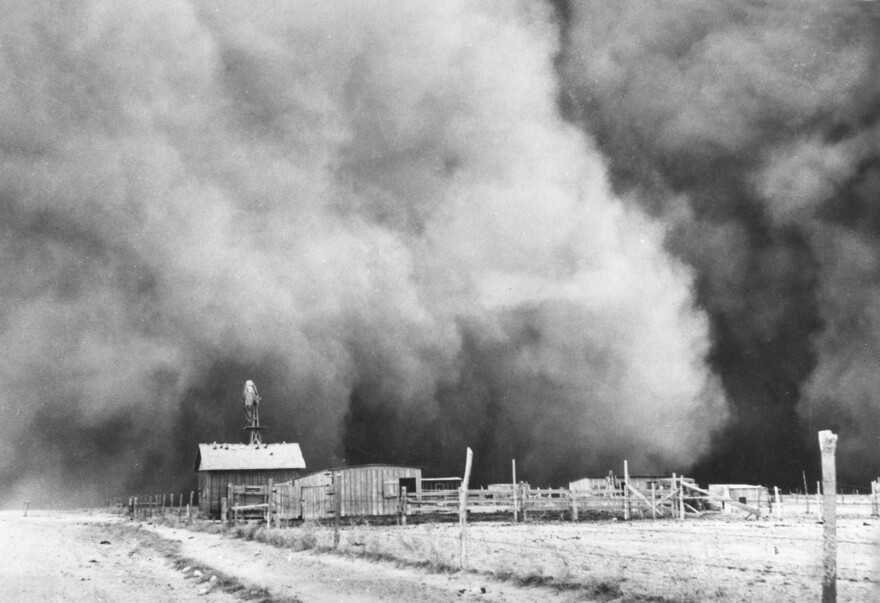Ninety years ago this week, Oklahomans were met with a large wall of rolling black dust and sand, a day now known as "Black Sunday." Conservationists, farmers, lawmakers and historians gathered to remember the day, one of the worst dirt storms during the Dust Bowl, and the conservation ethic that followed.
After years of drought that brought on weeks of relentless dust storms, Oklahomans welcomed the clear and calm Palm Sunday on April 14, 1935.
But a cold front dropped south, changed the temperature and picked up wind speeds. Later in the day, a black dust storm filled the sky. Clouds about 500–600 feet tall began to roll across the plains.
Marietta Foreman was a child in the Oklahoma panhandle with her parents in the car. In a 2001 interview with OSU's Oral History Program, Foreman shared her experience.
"It was just so still. You could see this coming but there was no wind; the birds, there were just thousands of them coming, just coming and coming and coming," Foreman said. "When it hit, they were still hitting the car, just like hailstones."
As the wall of dust and debris began to roll in, her family picked up a boy trailing a wagon with a couple of cows. Then they had to stop and for a while, Foreman said she could not see in front of her face. When they started the car, lights turned on behind them, and they led a line of vehicles following bumper-to-bumper.

When it was all said and done, the dust storm on Black Sunday covered an area about 800 miles long and about 300–500 miles wide. It stretched from central Nebraska to the southern border and from eastern Colorado to eastern Kansas, according to the National Weather Service. The Oklahoma and Texas panhandles experienced the worst conditions.
"So 300,000 tons of soil left the Great Plains that day. That was the estimate," said Ben Pollard, the Oklahoma Conservation Historical Society president.
Pollard was one of a handful of people who spoke at a gathering commemorating the 90th anniversary of Black Sunday, hosted by the society and the Oklahoma Association of Conservation Districts, this week.

The Dust Bowl, Pollard said, marked the start of Oklahoma's and the nation's soil conservation movement. He said the gathering's purpose was to commemorate the storm and the development of the state's conservation ethic over the last 90 years.
He said Black Sunday was the final catalyst for Congress to take action.
Two weeks after the event, Congress passed the Soil Conservation Act. It created the Soil Conservation Service, now the Natural Resource Conservation Service in the U.S. Department of Agriculture, which has seen employee layoffs recently.
While conservation and conservationists have played a role in Oklahoma's history, Pollard said their work is not done.
"We've experienced our own pretty significant dust storms here, just in the last month in Oklahoma. So we know that this is not something that's been fixed once and for all, and that conservation really is an ongoing system," Pollard said. "There has to be innovation, we have to learn new technologies. We learn new science that can help us better deal with some of these problems."
Copyright 2025 KOSU







